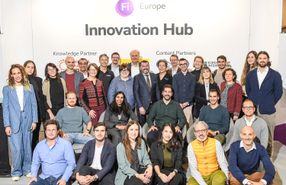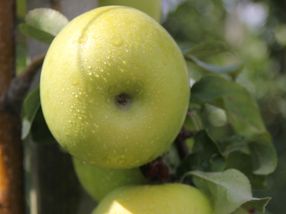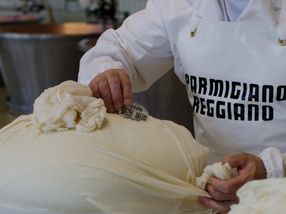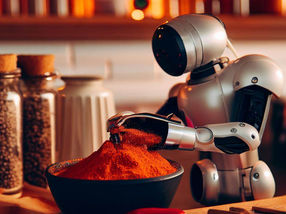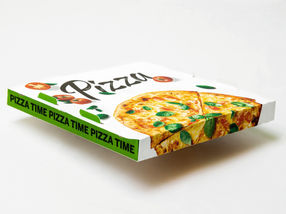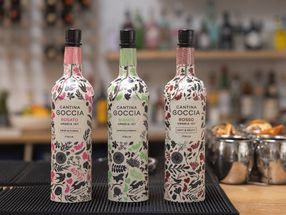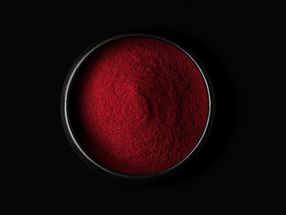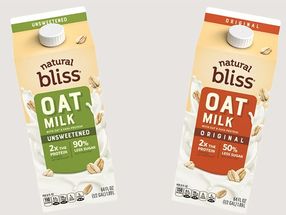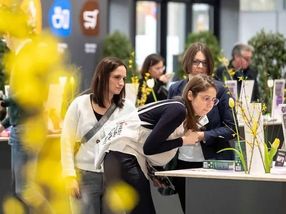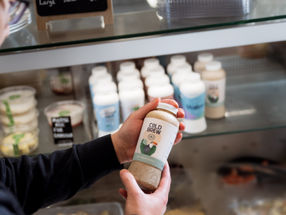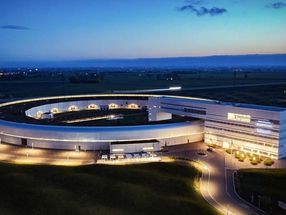Detecting food contamination
A new approach: Hyperspectral imaging
Inspection is a critical component of HACCP programs in the food industry. Hyperspectral imaging now provides a powerful complementary approach for the machine vision engineer.
Its ability to identify differences in the chemical composition of organic materials opens up major new possibilities for detecting impurities in food products. Most importantly, systems are now available that operate in real time, allowing them to be used on high speed production lines.
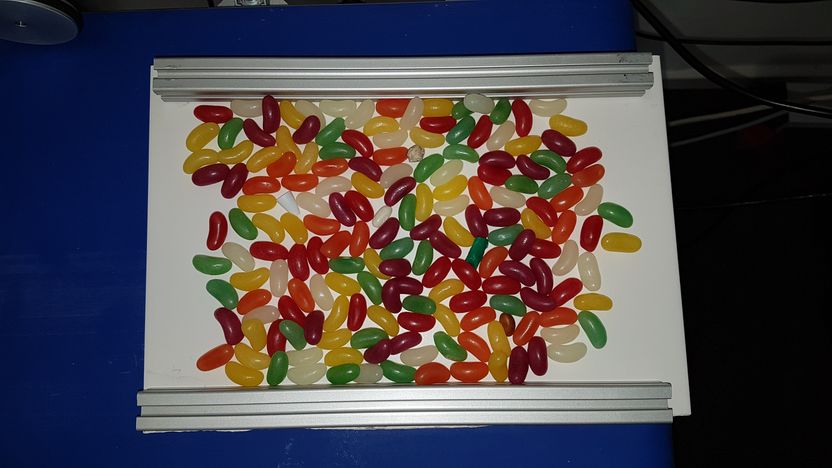
Jelly beans - their different shapes and colours, but similar density, make it hard to identify them by conventional methods.
STEMMER IMAGING AG

Hyperspectral imaging reveals the jelly beans.
STEMMER IMAGING AG
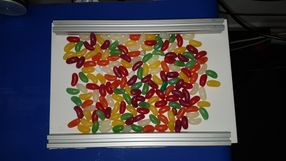

While metal detection, X-ray and conventional machine vision inspection are widely used as part of HACCP principles to detect physical contaminants on food production lines, they each have their limitations. Metal detection concentrates on the identification of metal contaminants while X-ray inspection is only effective if there is a sufficient difference in density between the contaminant and the product being inspected. Conventional machine vision systems look for contaminants based on parameters such as size, shape and colour. Hyperspectral imaging, however, combines spectroscopical analysis with machine vision to allow images to be colour coded according to the chemical composition of the materials being imaged. In this way, both organic and anorganic contaminants can be readily identified by a single system.
Hyperspectral imaging in action
The capabilities of hyperspectral imaging are can be illustrated using this example of confectionery products. The jelly beans shown on in the main image (1) contain several non-metallic foreign bodies. These have different shapes and colours but similar density to the confectionery itself, making them difficult to identify by conventional methods. Hyperspectral imaging, however, readily reveals them. The jelly beans have the same chemical composition and show as green, while the contaminants have a different chemical composition and are shown clearly in red (image 2). The hyperspectral image is acquired into machine vision software for colour sorting and traditional measurements.
The hyperspectral imaging technique
The principle of chemical colour imaging is based on spectroscopically analysing the infrared wavelengths of light from the object in real time. This gives a ‘chemical fingerprint’ of the materials being imaged. Each chemical component identified can be colour coded in the image. In this way, chemical differences in similar looking materials can be identified. Similarly, chemically identical materials in different looking objects can be determined. A spectrograph is needed to sort the light reflected from the sample into its constituent wavelengths. An IR-sensitive sensor then acquires an image from the sample at each of these wavelengths. These images are combined to form a three-dimensional hyperspectral data cube which can contain very large volumes of data.
The CVS HyperInspect system from Stemmer Imaging has all of these necessary components built into a fully functional system to meet the particular requirements of the application. The system also includes flexible, high-speed data processing software to extract data from the data cube and produce the colour coded image. Images can be further processed and analysed using the powerful machine vision software that is also included.
A multitude of applications
By simplifying the whole process, CVS HyperInspect has opened up applications in a multitude of other industries as well, including pharmaceutical and packaging. Many packaging materials are transparent to the infrared light used in the technique. This means that materials can still be differentiated chemically, even through the packaging.
Most read news
Other news from the department research and development

Get the food & beverage industry in your inbox
By submitting this form you agree that LUMITOS AG will send you the newsletter(s) selected above by email. Your data will not be passed on to third parties. Your data will be stored and processed in accordance with our data protection regulations. LUMITOS may contact you by email for the purpose of advertising or market and opinion surveys. You can revoke your consent at any time without giving reasons to LUMITOS AG, Ernst-Augustin-Str. 2, 12489 Berlin, Germany or by e-mail at revoke@lumitos.com with effect for the future. In addition, each email contains a link to unsubscribe from the corresponding newsletter.
Most read news
More news from our other portals
See the theme worlds for related content
Topic World Foreign body detection
Detecting foreign objects in food and beverages is a critical step in ensuring the safety and quality of the products we consume every day. Whether through metal detectors, X-ray systems or optical detection methods, foreign object detection protects us from unwanted and potentially dangerous objects in our food.

Topic World Foreign body detection
Detecting foreign objects in food and beverages is a critical step in ensuring the safety and quality of the products we consume every day. Whether through metal detectors, X-ray systems or optical detection methods, foreign object detection protects us from unwanted and potentially dangerous objects in our food.
Topic world Food safety
Food safety is at the heart of the food and beverage industry. It ensures that the food we eat every day is not only nutritious, but also free of harmful contaminants. From field to plate, the industry monitors and regulates every step of the process with strict quality controls, advanced testing methods and continuous research.
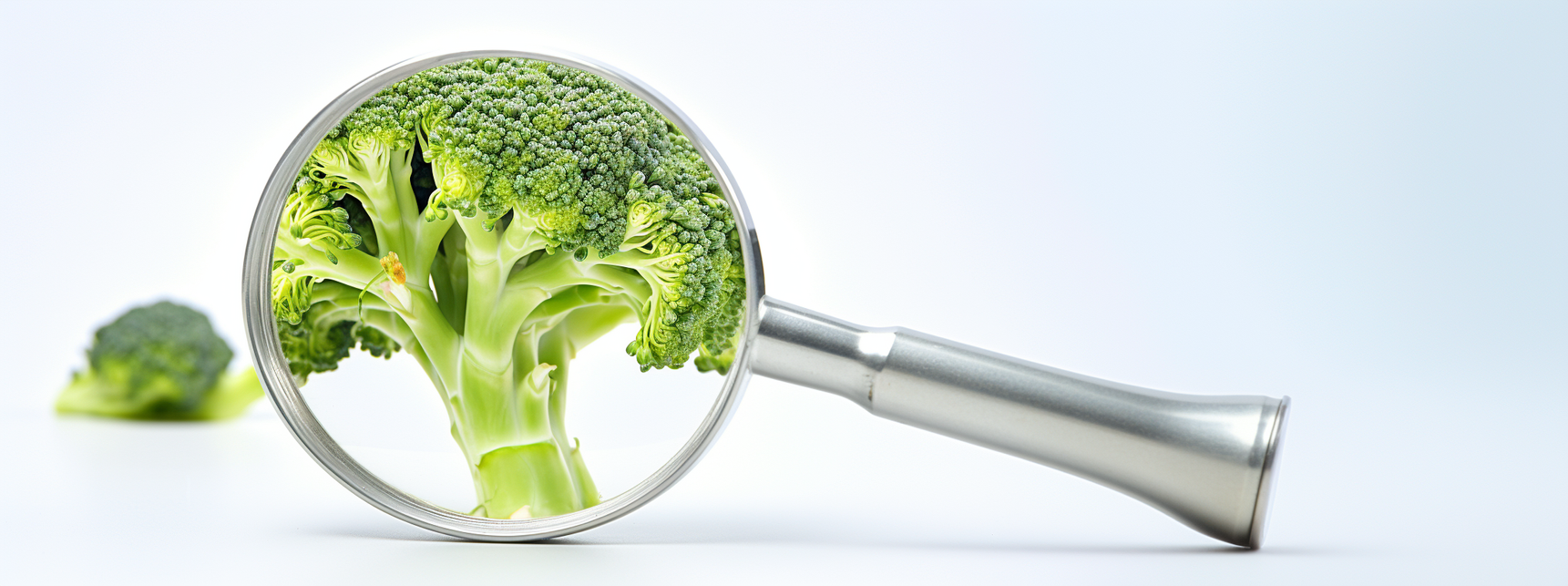
Topic world Food safety
Food safety is at the heart of the food and beverage industry. It ensures that the food we eat every day is not only nutritious, but also free of harmful contaminants. From field to plate, the industry monitors and regulates every step of the process with strict quality controls, advanced testing methods and continuous research.


